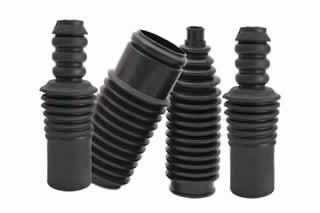
If you need a custom part in a specific size and shape, molding may offer a solution. As the name suggests, it involves the use of a mold.
Molding is a manufacturing process in which a mold is filled with a material. The hardened material, known as the casting, is then ejected or otherwise removed from the mold. The casting will essentially take the same size and shape as the mold cavity. Therefore, molding can be used to create parts of all sizes and shapes. Below are the three most common molding techniques for custom parts.
#1) Compression
Compression molding is typically preferred for large-volume production processes. Like all molding techniques, it involves the use of a mold. Compression molding is unique, though, because of its use of a top plug that pressurizes the mold cavity.
For compression molding, the material is initially preheated, after which it’s placed inside of the mold cavity, which is also preheated. The mold is then closed and affixed with a top plug. The top plug seals the mold while simultaneously pressurizing it.
#2) Injection
Injection molding is another common molding technique for custom parts. It’s similar to compression molding. Both compression and injection molding require a heated and pressurized mold.
Only injection molding, though, uses pails or barrels of material. The pails or barrels are mixed with a curing agent, which allows the casting to solidify and harden more quickly inside of the mold cavity than compression molding.
Another difference between compression and injection molding is that the latter involves pumping the raw material directly into the machine. With compression molding, on the other hand, the raw material is typically placed inside of the mold cavity.
#3) Transfer
Finally, there’s transfer molding. With transfer molding, the raw material is placed in a pot between the top place and bottom gate of the mold. This allows the raw material to flow at an even and consistent pace into the mold cavity.
Custom parts produced with transfer molding typically have marks. Known as gate marks, they indicate the placement of the gates during the transfer process. Transfer molding is used to create custom parts by transferring raw material into the mold cavity through a gate.
In Conclusion
Not all custom parts are made with the same molding technique. There are several different molding techniques used in the manufacturing industry. For custom parts, some of the most common molding techniques include compression, injection and transfer.
